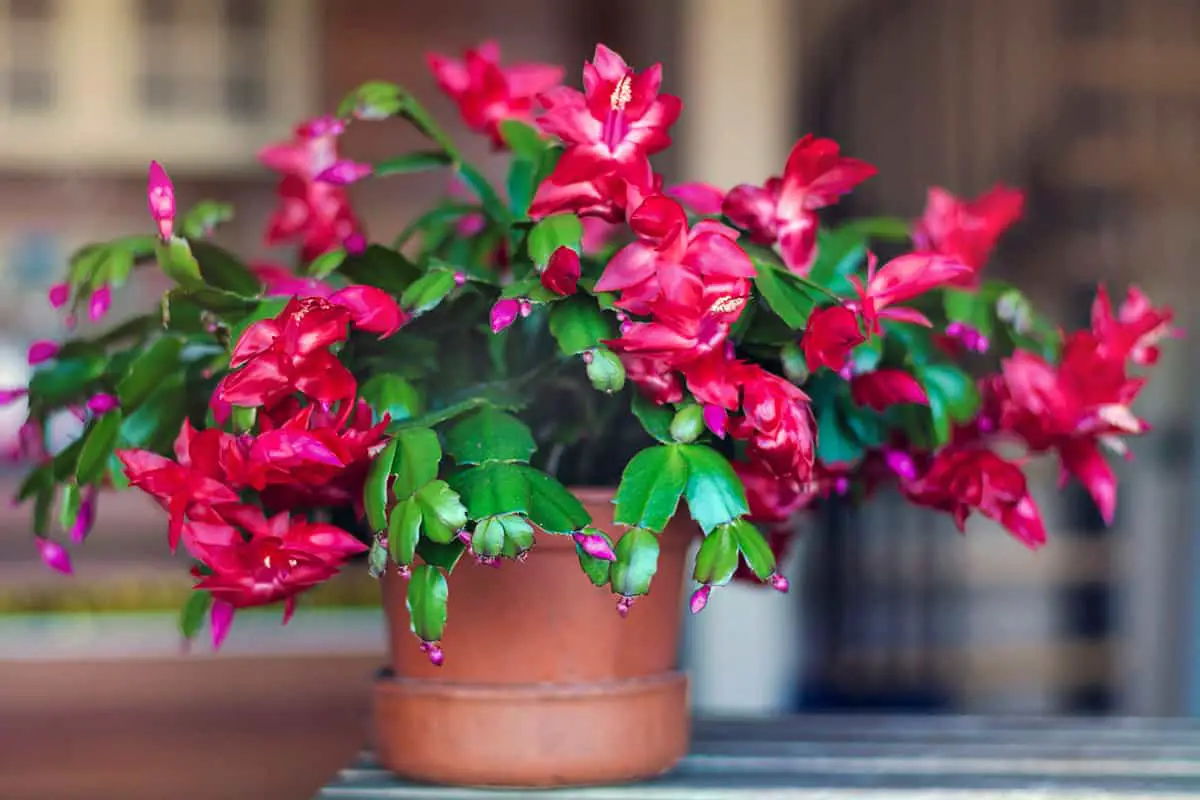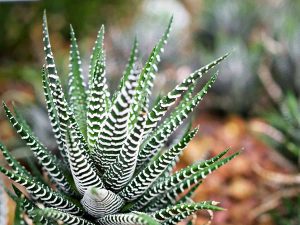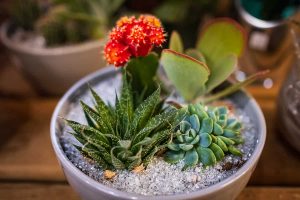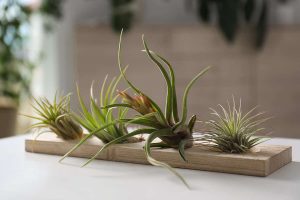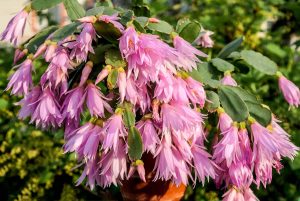As a Christmas cactus owner, understanding the unique needs of your plant helps ensure a beautiful, long-lasting bloom. Christmas cacti are known for their colorful flowers, making them a sought-after holiday houseplant. This guide will cover the essential tips every Christmas Cactus owner needs to ensure their plant thrives and lights up their space every holiday season.
Table of Contents
- Christmas Cactus Is Not A Desert Plant
- Know Your Holiday Cactus Type
- Christmas Or Thanksgiving Cactus?
- Air Moisture Keeps It Happy
- No Need To Repot Often
- Cold Nights Trigger Flowering
- Fertilization Is Key For Growth And Blooms
- Outdoor Time Benefits Your Cactus
- Be Gentle With Its Leaves
- Safe Around Pets
- Long Lifespan
- Less Water In Winter
Christmas Cactus Is Not A Desert Plant
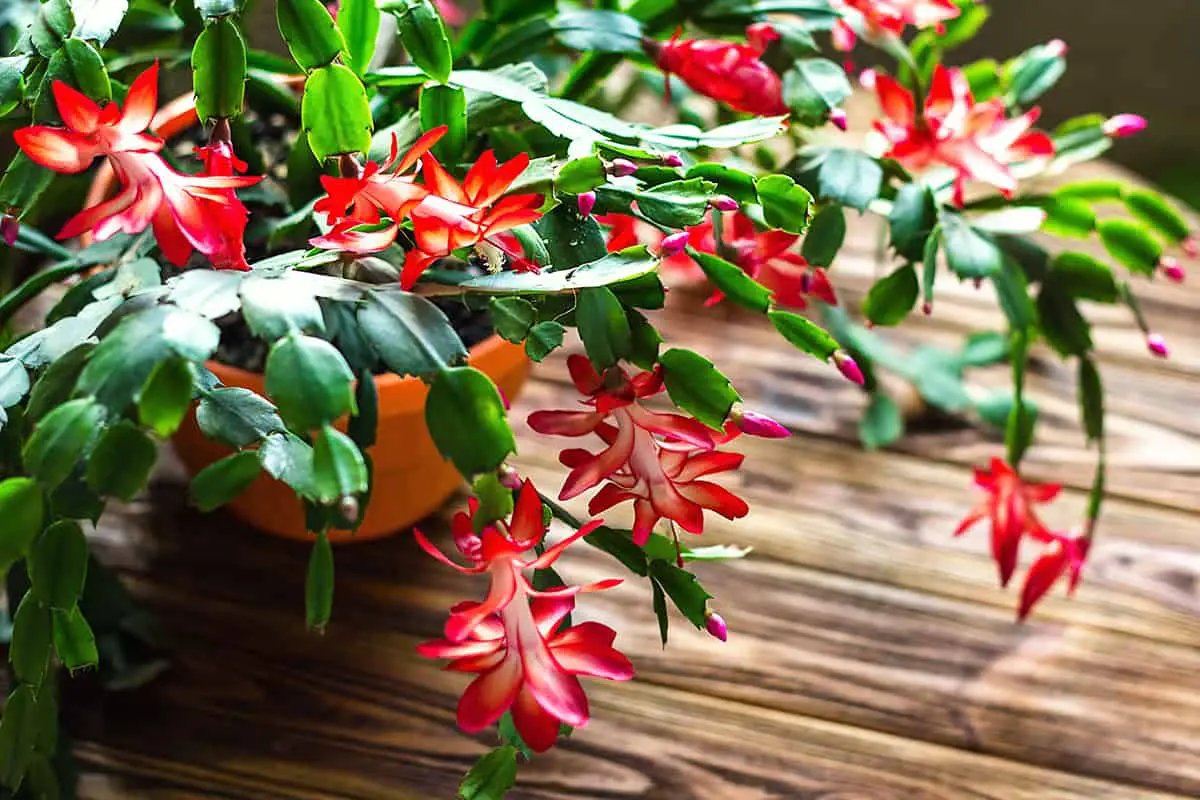
Unlike what its name may suggest, the Christmas cactus is not a desert plant. It hails from the rainforests of Brazil where it thrives in more dynamic and diverse conditions than its arid counterparts.
As a Christmas cactus owner, you must provide the ideal environment for your plant. Mimic its native habitat by maintaining high humidity. Place your cactus on a tray filled with small stones and water, or mist it regularly to achieve the desired moisture levels.
Fertilize your Christmas cactus from April to September, but refrain from doing so during the blooming period. Prune it after the blooming ends to encourage the growth of new branches. If you’re starting a new plant from a cutting, allow the cut end to dry for a few days before planting it in moist, clean potting mix without the need for rooting hormone.
Know Your Holiday Cactus Type
Knowing the type of your holiday cactus enables you to tailor its care accordingly. Each variety has specific light, watering, and temperature needs that optimize growth and trigger blooming. There are three main types of holiday cactus: Christmas, Thanksgiving, and Easter cactus.
Christmas cactus (Schlumbergera x buckleyi) is the traditional variety associated with the holiday season. It features forest green, flat, and segmented leaves. The flowers of this type come in shades of pink, red, white, and purple, with curved, teardrop-shaped petals.
The Thanksgiving cactus (Schlumbergera truncata) blooms around November, slightly earlier than its Christmas counterpart. Its leaves have pointy, claw-like edges, while its flowers appear in various colors, such as pink, red, white, yellow, and purple with crinkled, asymmetrical petals.
Lastly, Easter cactus (Rhipsalidopsis gaertneri) flowers in the spring around Easter time. This species has rounded, smooth-edged leaves, and its flowers are tubular in shape, with colors ranging from pink, to peach, to red.
Christmas Or Thanksgiving Cactus?
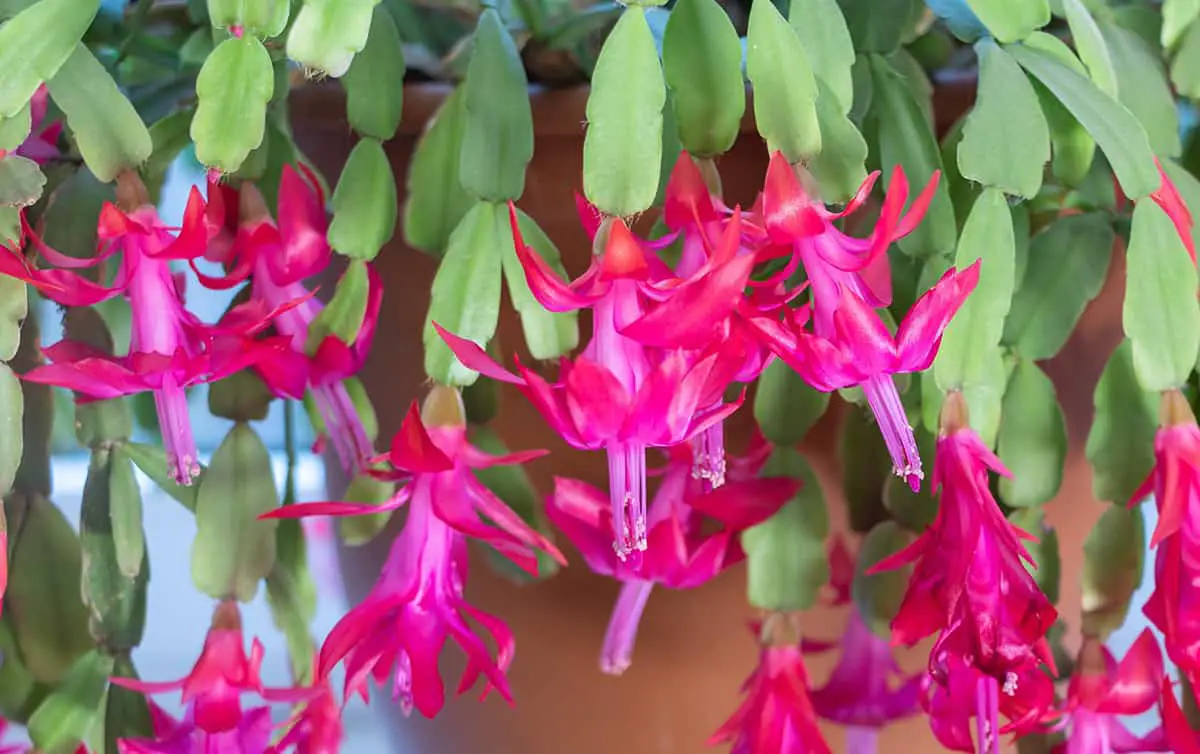
Distinguishing between a Christmas cactus and a Thanksgiving cactus can be confusing. The easiest way to tell them apart is by looking at their leaves and bloom periods. Christmas cacti have rounded or lobed margins on their leaves, while Thanksgiving cacti have 2-4 points or teeth along their edges.
Another visible difference is their bloom periods. Thanksgiving cacti typically start blooming in late fall, whereas Christmas cacti begin around a month later. An Easter cactus, another holiday cactus variant, begins producing flower buds after the height of the winter season.
Air Moisture Keeps It Happy
Your Christmas cactus thrives in a moist environment. The air’s humidity plays a crucial role in keeping your plant healthy.
You can increase the air moisture around the plant by using a humidifier or creating a pebble tray. To make a pebble tray, place a layer of pebbles in a shallow dish and fill it with water just below the top of the pebbles. Position your cactus pot on the pebbles, ensuring the pot base doesn’t touch the water. This setup ensures the plant gets a continuous supply of moisture without overwatering.
Monitor the humidity near your plant often, especially during winter when homes can be drier due to heating systems. Optimal humidity levels for a Christmas cactus are around 50% to 60%. If the air is too dry, your Christmas cactus may suffer from bud drop or leaf withering.
No Need To Repot Often
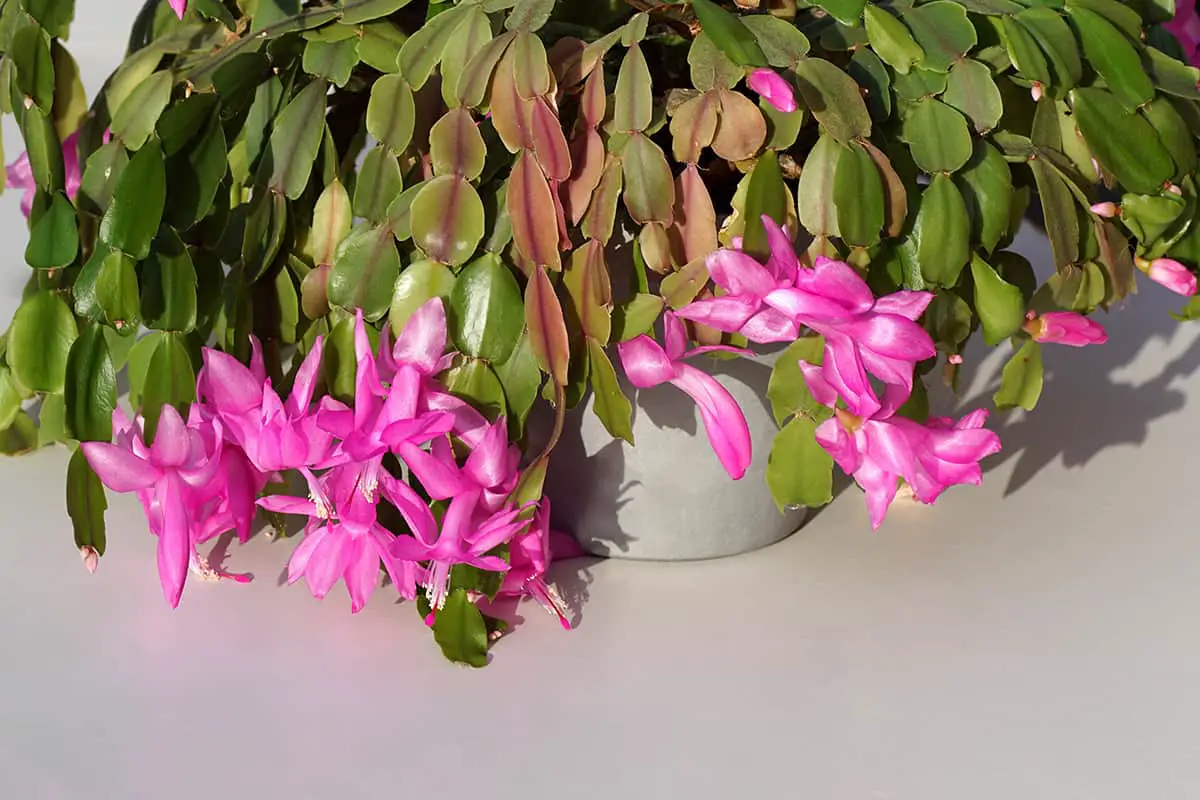
One of the great things about owning a Christmas cactus is that repotting isn’t necessary very often. These plants actually thrive when they are slightly pot-bound. This means they grow best when their roots are snug in their container. In fact, it is completely normal for a Christmas cactus to outgrow the pot before you need to consider repotting it.
When it comes to potting soil, a well-draining mix is important. A special cactus mix is not required; an all-purpose potting soil will work if it drains well. Remember, Christmas cacti are tropical plants and their requirements differ from desert cacti. Make sure the pot you choose has drainage holes to prevent waterlogged roots, which can lead to root rot.
It’s essential to monitor your Christmas cactus for signs it needs repotting. If you notice the plant is extremely root-bound or if it has been in the same pot for three to four years, it might be time to repot. The best time to do this is in the spring after the plant has finished blooming. This ensures the cactus has enough energy to establish its roots in a new pot, promoting stronger growth.
Cold Nights Trigger Flowering
Cold temperatures are a crucial factor in initiating blooms in these cacti. During the fall months, it is best to keep your Christmas Cactus in a place with cool, 60-degree nights and only nine hours of daylight.
Another vital aspect of blooming is the length of darkness. Christmas Cacti are short-day plants, meaning they require at least 12 hours of continuous darkness for 5-6 weeks to start flowering. If you want your cactus to bloom around the holidays, mark your calendar for September 19th as the date to begin this process. Remember that any interruption in darkness for too long (2+ hours) can prevent flower buds from forming.
Fertilization Is Key For Growth And Blooms
Fertilizing your Christmas cactus is essential for promoting growth and producing vibrant blooms. Start by choosing a balanced houseplant fertilizer and use it at half-strength. It’s best to fertilize monthly from June through August. During the budding and blooming stages, switch to a high potassium fertilizer to encourage more vivid flowers.
Outdoor Time Benefits Your Cactus
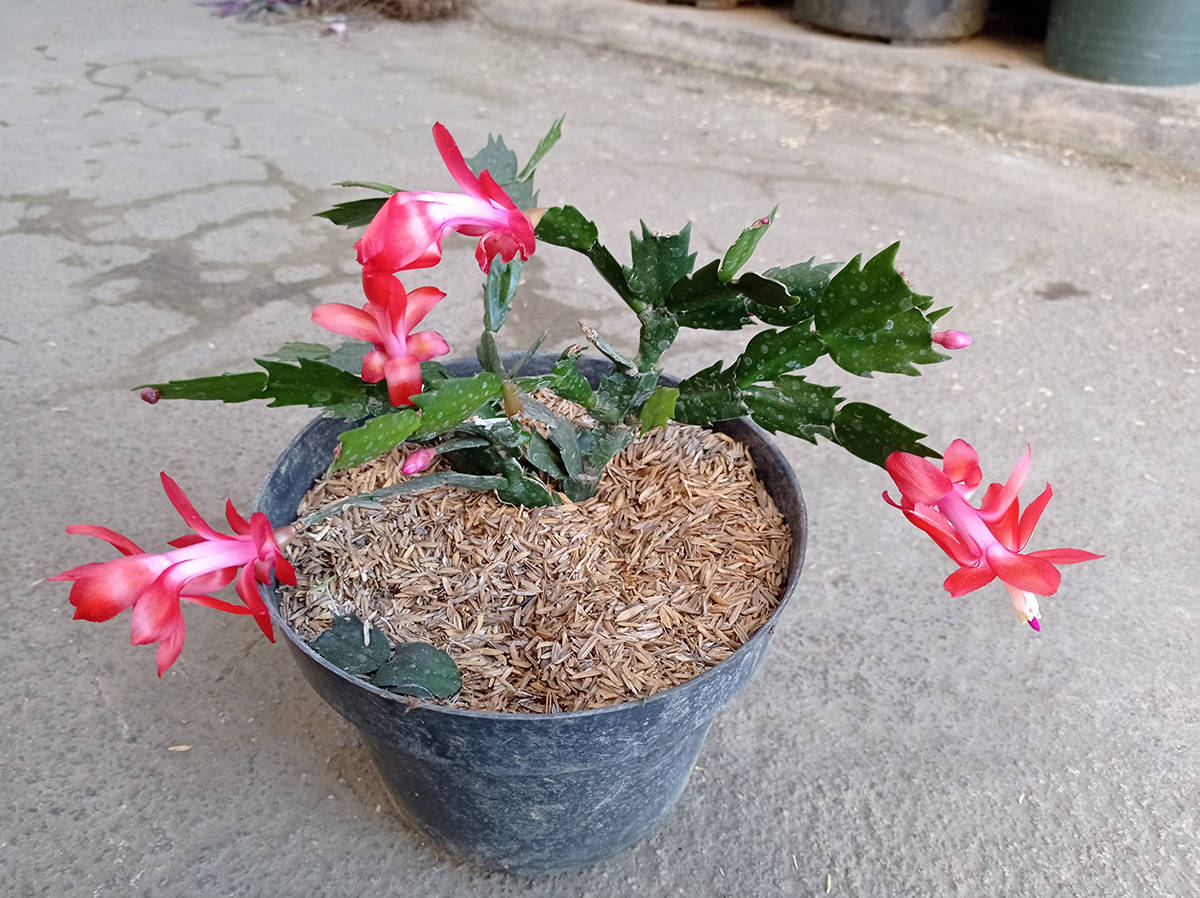
During warmer months, it’s beneficial to place your Christmas cactus outside. This allows the plant to access more sunshine, helping it grow better. Keep in mind, however, that you should place it in an area with indirect light to prevent sunburn or leaf discoloration.
When transitioning your cactus outdoors, do so gradually. This helps your plant acclimate to the environmental change. Start by placing it in a shaded area and gradually move it to a brighter spot over a few weeks. Remember to monitor weather conditions as well, and bring your cactus back indoors if temperatures drop too low.
Be Gentle With Its Leaves
These plants have flat, segmented leaves, which are fragile and can easily break if not handled with care. So, when you’re managing your cactus, it’s crucial to be gentle.
Avoid touching or moving your cactus more than necessary. If you need to handle it, hold the plant’s base or use a soft cloth to protect its leaves from damage. Christmas cacti are long-lived, so taking the time to care for their leaves will help ensure their longevity.
Safe Around Pets
Fortunately, the Christmas cactus is generally considered safe for cats and dogs. That said, you should still keep an eye on your pets around any plant, as they could knock it over or cause other issues.
To ensure the safety of both your plants and pets, you may want to consider placing your Christmas cactus in a location that is difficult for pets to access. Possibilities include high shelves, hanging baskets, or closed-off rooms. This not only keeps your pets safe but also protects your cactus from damage.
Long Lifespan
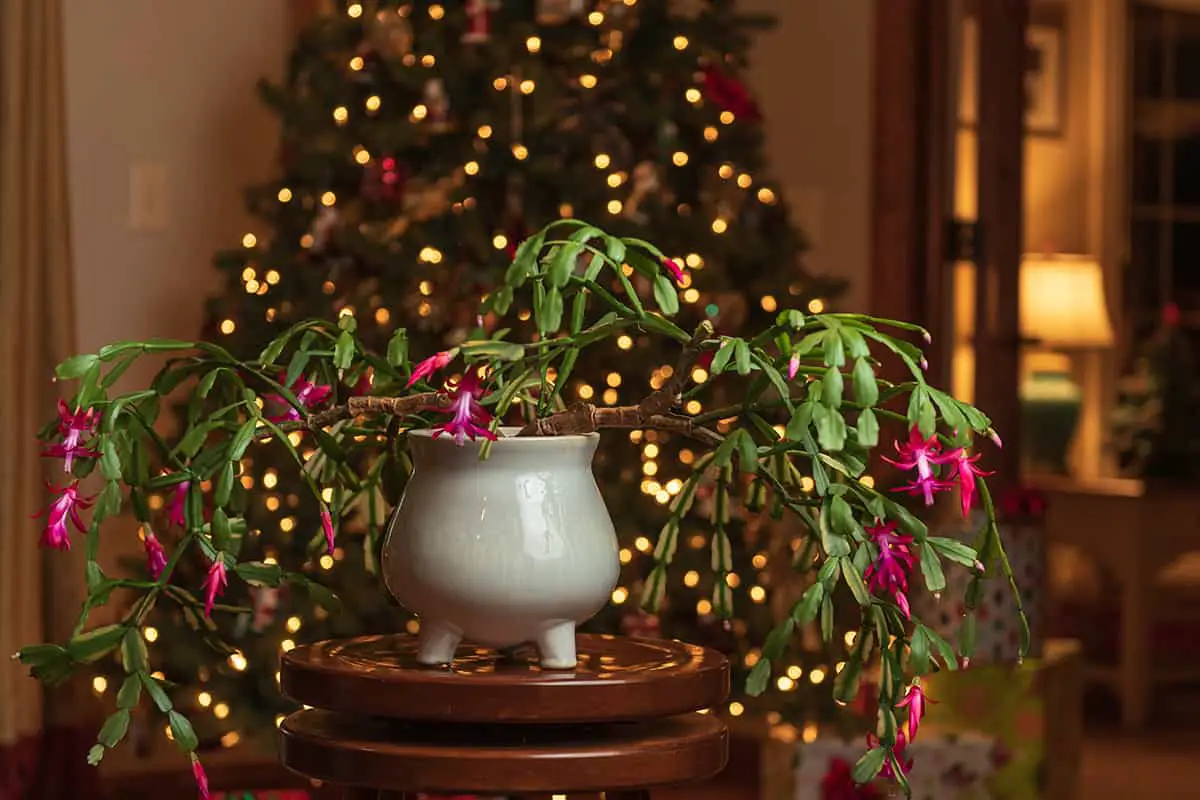
Your Christmas cactus can thrive for 20 to 30 years, and in some instances, they become cherished heirlooms passed down through generations, living upwards of 100 years
Key to their longevity is understanding their specific needs: moderate watering, high humidity, and indirect sunlight. Furthermore, periodic repotting and the right soil mix can rejuvenate an older Christmas cactus, encouraging continued growth and blooming.
Less Water In Winter
Taking care of your Christmas cactus involves understanding its water needs during different seasons. In winter, it is important to reduce the amount of water you provide to your plant. The Christmas cactus thrives when its potting soil dries out between waterings.
Your cactus is a tropical plant, not a desert cactus. So it does not need constant drought, but it is sensitive to overwatering. Avoid keeping the potting soil waterlogged, which may lead to root rot. When you water your plant, use a top-down approach, wetting the soil thoroughly and letting excess water drain from the container.
During winter, the cactus enters a semi-dormant stage. This means it requires less water compared to spring and summer seasons. Waiting until the soil feels dry to the touch helps ensure you do not overwater your plant. Fertilize your Christmas cactus once a month from April to September for optimized growth.
